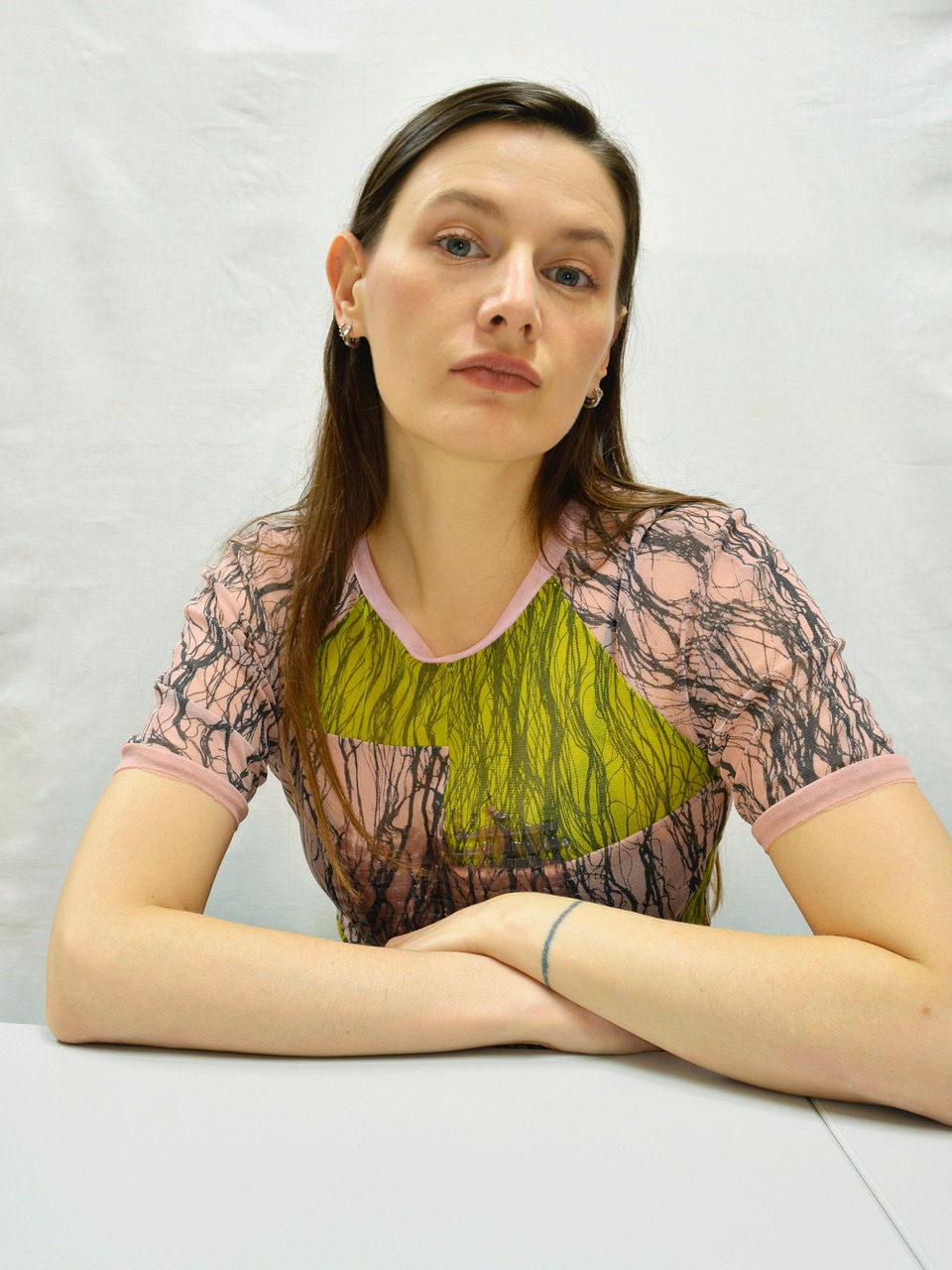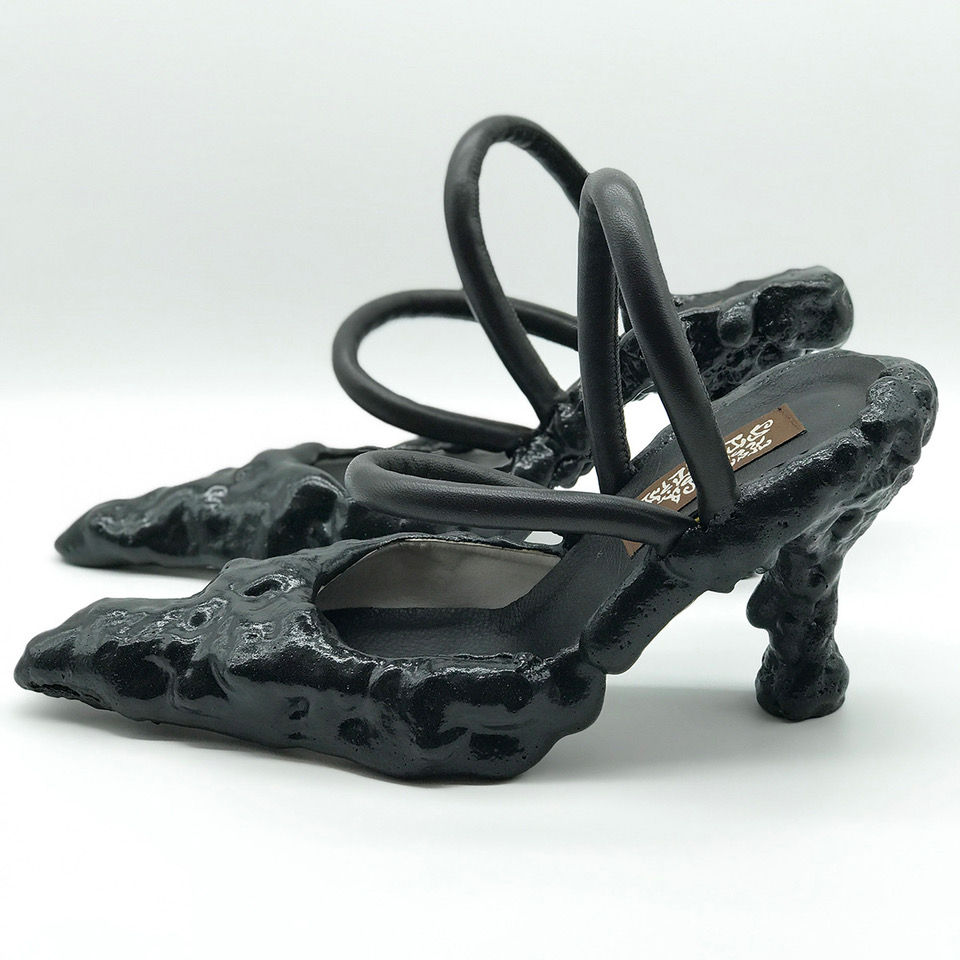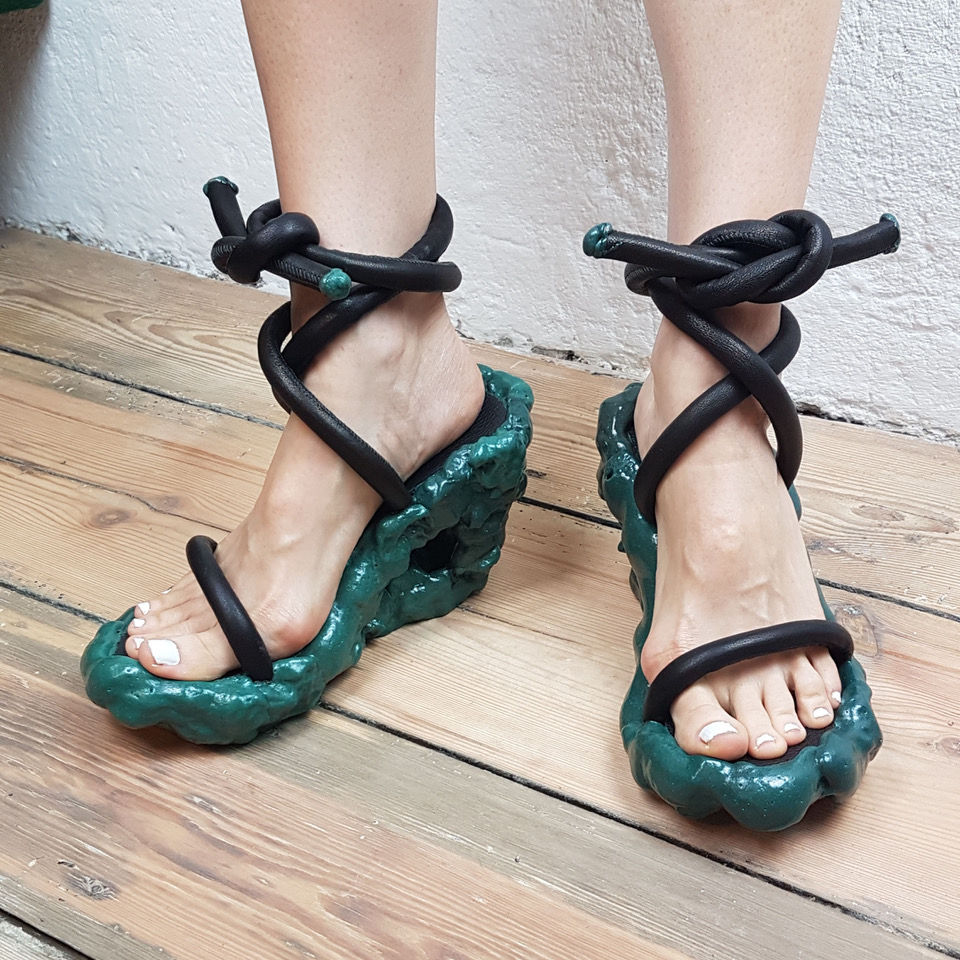Fascinated by Disgust: Helena Stölting's Eccentric Vision in Fashion
- Cristina Sandu
- Jun 7, 2024
- 4 min read
Updated: Aug 4, 2024
Fashion designer Helena Stölting tells Cristina Sandu about the Slime Shoes’ design, the fluidity of art and the embracing the unconventional
Helena Stölting pushes boundaries with her perception of beauty. “Loose hairs in the shower drain and pulled teeth” are making her creations explore the tension between disgust and sexiness, creating the artistic vision of an independent fashion designer that transcends the ordinary.
Creating a context for her inspirations, the Berlin-based designer draws this parallel between the stereotypes of beauty regarding the human body associated with “shiny, long hair or white teeth” and their ugly side that creates the idea of negative emotions. “They also possess a flip side when they appear in a different context, such as loose hairs in the shower drain or pulled teeth, which signify ugliness, illness, decay, triggering disgust and repulsion,” she adds.
The duality, she explains, is shown throughout her designs and aims to highlight a fluidity in the brand’s identity. “What fascinates me is this duality or at least the proximity of opposing qualities with strong emotional connotations,” she says.
One of her most famous creations is the Slime Shoes, which show her remarkable artistic vision in an intriguing way that “challenges traditional perceptions of footwear, “she says. Designing my slime shoes is characterised by my playful material experiments driven by a fascination with bodily fluids, unsettling surfaces, orifices, and the use of dirty colours.”
“It often results in accidental outcomes as I hand-sculpt the shoes. This hands-on approach allows spontaneous and unexpected forms to emerge, adding an element of surprise and uncertainty to each pair,” she says, embracing the unexpected, making those who follow her art step outside their comfort zone.
Helena’s designs aim to challenge her audience and make them reevaluate what normality is and how to embrace stylish aesthetics. “My motivation as a fashion designer is driven by the desire to explore and create unconventional materials and innovative clothing that challenges the viewers’ perception of beauty,” she adds.
Not only does she want her audience to step out of their comfort zone, but also to understand and accept the art of disgust as portrayed through her designs. “It’s the moment when disgust transforms into fascination and allure, prompting a revaluation of aesthetics,” she explains. “I’m fascinated by the moment when a body transitions from being perceived as sexy to being deemed as nasty.”
Helena aims to explore unusual cuts and textures, challenging people to see outside the box and rethink their definition of beauty. “My clothing becomes a tool for individuals to explore and redefine their identities, reclaiming agency over their bodies and experiences,” she adds.
The tension between positive and negative feelings drives away this barrier created in the fashion world between traditionally tailored designs and new methods of exploring materials, leading to futuristic trends. “I make clothes for those who are fascinated and bewitched by them and enjoy the playful exploration of clothing as a means of self-expression and empowerment.”
Helena made a bold move while launching her label during the uncertainty of the first lockdown. What may seem unconventional to many, for Helena was a worthy choice of an artist willing to exhibit its creations. But this choice was made with the risk of facing the difficulties independent designers go through at the beginning of their careers.
“During the lockdown, many job opportunities abroad were abruptly cancelled. Rather than navigating the competitive landscape of job applications, I redirected my focus towards showcasing my creations online,” she says.
Helena’s risk was beneficial after the lockdown because our society began to appreciate and buy more from small, sustainable brands. “There is a growing interest in smaller brands that engage in eco-friendly, small-scale production and foster intimate connections with their audience,” she adds.
This led to authenticity becoming much more appreciated in independent brands, which “opened doors to amazing opportunities for small, independent designers like me, who embrace slow fashion principles and craft each piece by hand despite the challenges posed by the pandemic,” she says.
“I embrace the fact that my aesthetic tends to polarise people, dividing them into enthusiastic admirers and vehement critics”
Helena’s brand identity is based on handmade techniques that are used unconventionally. The originality of these techniques is highlighted by the creativity and inspiration that Helena gets from materials, which create a particular disgust at first sight. “Each piece becomes a personal token of individuality and self-expression, waiting to be embraced and cherished by those who wear them,” she says.
These materials, used in a mysterious style, provoke and attract people’s attention, but some even end up pleasantly noticing these creations and wanting customized pieces. “Engaging directly in the creation process also allows me to offer customized products. I can adjust colours and sizes to meet my customers’ needs,” Helena reveals about the artisanal process of using second-hand and deconstructed items for her designs.
Those who are captivated by her designs and have adapted to the unconventional beauty that Helena follows confess that their emotions fluctuate from overwhelming to empowering. “It’s touching to hear stories like one customer who eagerly anticipates receiving their shoes, already dreaming about them, while another believes my shoes will imbue them with a sense of power,” she adds.
As she looks to the future, Helena remains committed to pushing the boundaries of fashion with aspects of the human body that cause fear and disgust for some and fascination and excitement for her admirers. “I want to explore more on how societal norms and cultural perceptions influence our understanding of acceptable bodily expressions and behaviours,” she says.
Magazine version written and designed by Cristina Sandu:







Comments